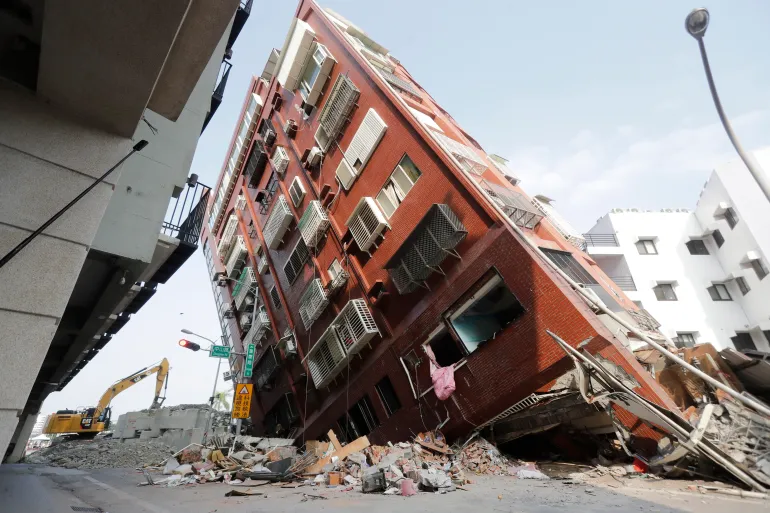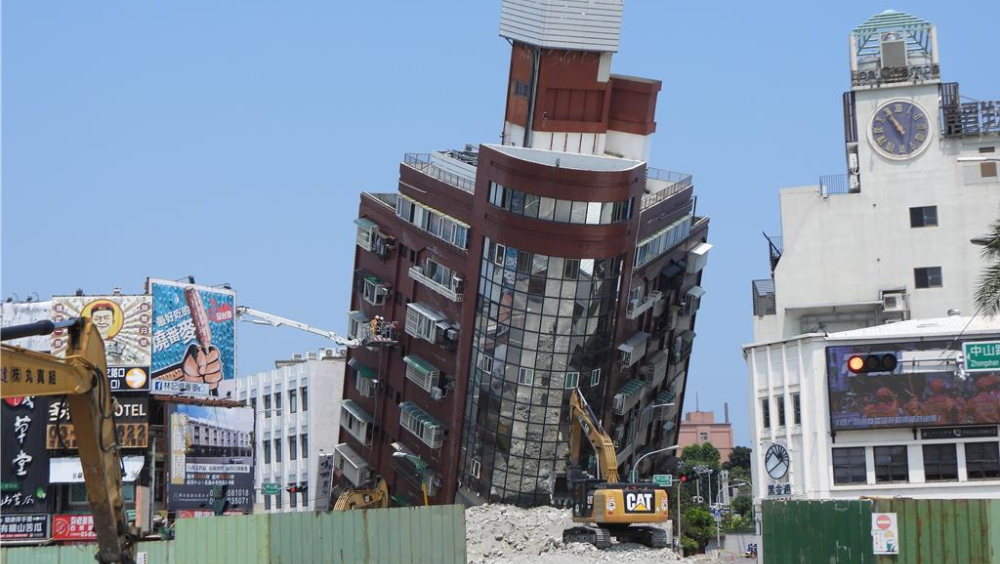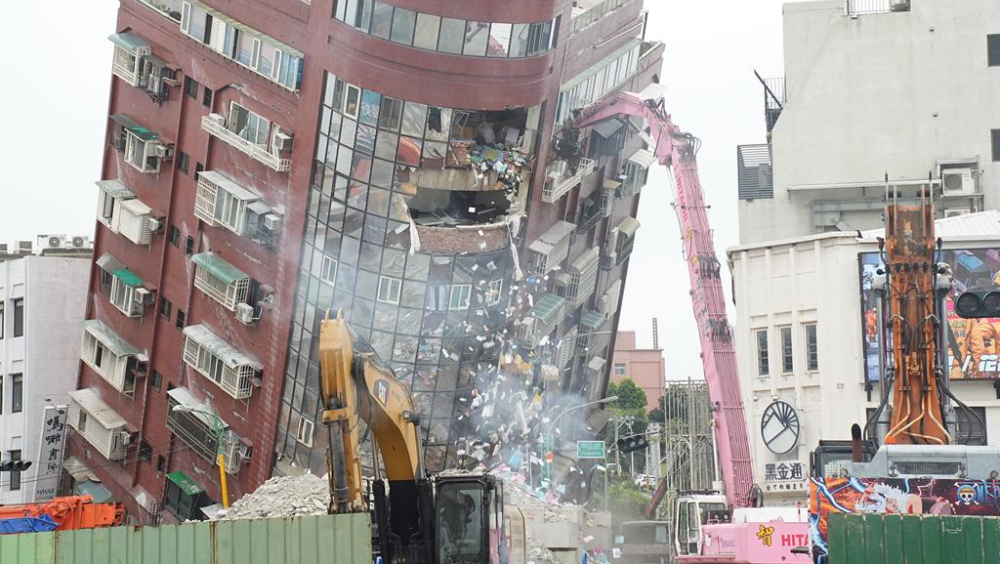What to Do During an Earthquake?
Two popular tourist destinations for Hong Kong people, Japan and Taiwan, have experienced consecutive earthquakes this week. If encountering a natural disaster while traveling, how should one respond? Most importantly, do not panic and flee hastily! This article compiles disaster prevention information for Japan and Taiwan, as well as emergency evacuation materials from the Hong Kong Fire Services Department, providing self-rescue measures during earthquakes indoors, outdoors, while riding vehicles, and during self-driving tours to reduce the risk of injury or being trapped.
Taiwan Hualien Earthquake Claims 10 Lives, Nearly 500 Aftershocks in 2 Days
Be cautious of aftershocks after a major earthquake! Hualien, Taiwan experienced a 7.2-magnitude Richter scale earthquake on April 3rd. According to data from the Taiwan Central Weather Bureau, as of 3 p.m. today (5th), there have been over 500 aftershocks. The local Central Disaster Response Center has also reported that this natural disaster has resulted in 10 deaths and 1,113 injuries. Additionally, there was a 6.0-magnitude earthquake off the coast of Fukushima Prefecture, Japan around noon on the 4th, fortunately with no reports of casualties or tsunami danger.
How to Survive an Earthquake While Traveling? Indoor/Outdoor/Driving/Self-driving Survival Methods
When encountering an earthquake during travel, it’s important to know how to stay safe. We has compiled earthquake response and sheltering tips from Japan’s Tokyo Disaster Prevention Manual, the Central Weather Bureau’s earthquake protection materials in Taiwan, and the Hong Kong Fire Services Department’s emergency evacuation handbook for outbound travel:
Self-Rescue Measures during an Earthquake Indoors (Rooms/Bathrooms/Department Stores/Underground Streets/Airports, etc.):
1. Stay calm and adhere to the core principles of “Drop, Cover, and Hold On”. Grab something like a cushion to protect your head and quickly take cover under sturdy furniture or a table. Avoid walking barefoot and wear shoes or boots if possible to prevent cuts from debris.
2. Stay away from windows to avoid injury from shattered glass.
3. Do not panic and run outdoors as you might be struck by falling or collapsing objects. Wait for the shaking to stop before moving and watch out for scattered debris.
4. If you’re in a bathroom, being naked increases vulnerability to injury. Use items like a basin to shield your head from shattered mirrors or light bulbs and leave the bathroom immediately. When in a restroom, open the door immediately to avoid being trapped.
5. In department stores, supermarkets, or convenience stores, be mindful of flying goods or collapsing shelves. Use a shopping basket to protect yourself and move to the resting area near stairs or columns.
6. Underground streets may experience power outages. Avoid panicking or rushing towards emergency exits as it can lead to injuries. Lean against columns or walls to stop, remain calm, and avoid being struck by objects. Walk along the walls when moving.
7. In theaters, halls, or outdoor stadiums where there are many people, do not panic and rush to safety exits. Follow instructions from venue broadcasts or staff for evacuation.
8. Although the risk of airport collapse is relatively low, be cautious of falling glass or ceiling debris to avoid injury.
9. The higher the floor in tall buildings, the more intense the swaying. As a tourist unfamiliar with the floor layout, move closer to elevators, crouch down, and pay attention to building broadcasts. If inside an elevator, press all floors and exit at any opening. If trapped, use the emergency call button for help.
10. If trapped inside a room or under rubble and unable to move, continuously shouting can deplete energy and inhale harmful dust, potentially endangering your life. Use a hard object to bang on doors, walls, or pipes, blow a whistle to make a louder noise, or turn on a flashlight to attract rescuers’ attention. Use a pillow or blanket to protect your head from glass shards.
Self-Rescue Measures during an Earthquake Outdoors (Street/Bridges or Pedestrian Tunnels/Outskirts/Coastal Areas, etc.):
1. Stand in an open space or under a canopy. Do not panic and rush indoors.
2. Be aware of potential falling objects such as signs, potted plants, or tiles overhead, and stay away from outer walls or glass.
3. Keep a distance from under-construction buildings, utility poles, fences, or unsecured vending machines to avoid electrocution or injury.
4. If on a bridge or pedestrian tunnel, calmly and swiftly evacuate.
5. If on a busy street, move to safer areas like parks. If there’s no time to reach spacious areas, enter earthquake-resistant and newer reinforced concrete buildings to avoid danger from panic and crowding. Stay calm.
6. In outskirts, stay away from cliffs, riverbanks, or coastlines and seek refuge in open spaces. There’s a risk of landslides on hills, so quickly move away from slopes or cliffs. Subsequent aftershocks or rainfall can increase danger.
7. In islands or coastal areas, tsunamis may occur minutes before an earthquake. When a tsunami occurs, notify people around to immediately evacuate to higher ground or tsunami shelters.
Self-Rescue Measures during an Earthquake while Riding (Stations/Train Compartments, etc.):
1. At stations, quickly move to nearby pillars, crouch down, and wait for the shaking to stop. Be careful not to fall from platforms or walk onto tracks. Avoid being hit by falling objects. Follow instructions from station staff to avoid panic and danger.
2. If in crowded subway, metro, or tram compartments, during emergency braking, people may fall due to inertia and collide with each other. Those seated should protect their heads with bags, while those standing should crouch down, hold onto handrails or loops tightly, spread their feet apart, and try to stand steadily to prevent falling. Follow instructions from staff when shaking stops.
Self-Rescue Measures during an Earthquake while Driving (Highways/Bridges/Tunnels, etc.):
1. Avoid sudden braking, especially on highways, to prevent collisions. Grip the steering wheel, turn on hazard lights, gradually reduce speed, and park the vehicle by the roadside or in a plaza.
2. Turn off the engine and do not leave the vehicle until the earthquake subsides. Listen to the radio for earthquake updates and disaster information.
3. Before leaving the vehicle, leave the keys inside, do not lock the doors, and leave contact information inside with valuables.
4. On bridges, old ones may sustain damage. Cross bridges slowly.
5. In tunnels, be aware that ceilings and walls may collapse. If you can see the exit ahead, drive out slowly. If in a longer tunnel (Japan), pull over to the left, leave the keys in the car, and evacuate through emergency exits.
How to Seek Help When Encountering an Earthquake Abroad? Remember these 3 Phone Numbers:
The Immigration Department of the HKSAR has set up a 24-hour hotline for assistance to Hong Kong residents abroad: +852 1868. Hong Kong residents outside the territory, including in mainland China, can call for help in case of accidents or natural disasters.
The Ministry of Foreign Affairs of the People’s Republic of China operates a 24-hour hotline for global consular protection and services: +86 10 12308. It provides timely guidance and assistance to Chinese citizens abroad in emergencies. Cases of assistance for Hong Kong residents are also referred to the “Assistance to Hong Kong Residents Unit” of the Immigration Department for follow-up.
International Emergency Phone Number 112: In case of emergencies during your travels, dial the international emergency phone number 112 for assistance. As long as your mobile phone has power and receives any mobile network signal, you can dial 112 for free even without inserting a SIM card. The voice response system of this number will redirect the call to the emergency rescue call center of the country you are in for immediate assistance.
Earthquake Emergency Kit on Amazon:
https://amzn.to/3VRxrbB




